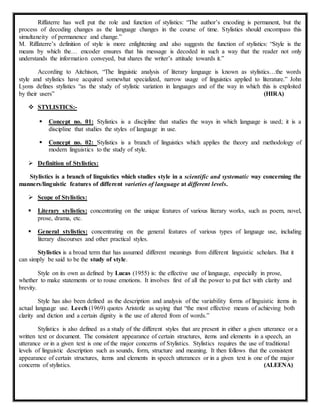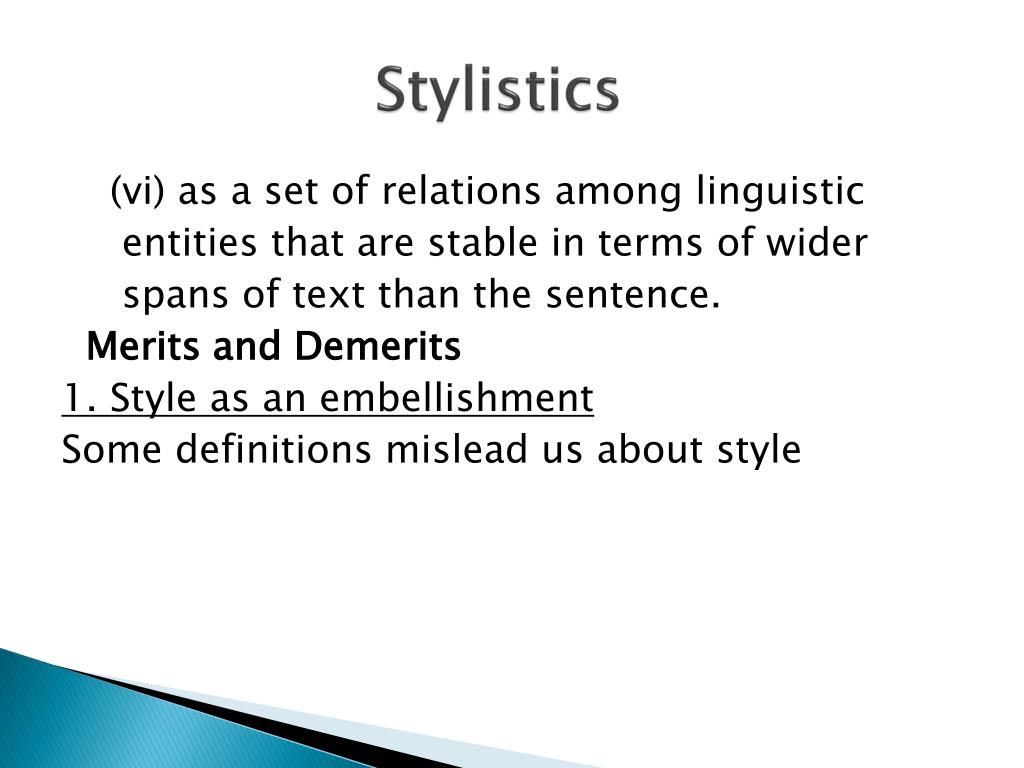Style is a multifaceted concept that refers to the specific way in which an individual or group expresses themselves through language. This can include various elements such as diction, syntax, and tone. Style is often used to distinguish one individual or group from another and can be a powerful tool for conveying meaning and shaping the way in which a message is received.
Stylistics, on the other hand, is the study of style in language. This can include the analysis of the language used by an individual or group, as well as the way in which language is used to convey meaning and elicit certain responses from the audience. Stylistics can also involve the study of the cultural and social context in which language is used, as well as the impact that language has on society and culture.
One key aspect of style is diction, or the choice of words used in a piece of writing or speech. Diction can be formal or informal, and can vary depending on the context in which it is used. For example, a politician may use more formal diction when giving a speech to a large audience, while a group of friends may use more informal diction when having a casual conversation. The choice of words can have a significant impact on the tone and overall message of a piece of writing or speech.
Syntax, or the arrangement of words and phrases to create well-formed sentences in a language, is another important aspect of style. Syntax can vary depending on the purpose of the writing or speech, as well as the intended audience. For example, a scientific paper may use more complex syntax to convey technical information, while a children's book may use simpler syntax to make it more accessible to young readers.
Tone is the attitude or feeling conveyed by a piece of writing or speech. Tone can be formal, informal, serious, humorous, sarcastic, or any number of other attitudes. The tone of a piece of writing or speech can have a significant impact on the way it is received by the audience, and can be used to convey the writer or speaker's perspective or emotion.
In stylistics, the analysis of style involves looking at these various elements of language and how they are used to convey meaning and elicit certain responses from the audience. This can include the examination of an individual's or group's unique style, as well as the way in which language is used in a specific context or for a particular purpose. Stylistics can be a useful tool for understanding the way language is used and the impact it has on society and culture.

:max_bytes(150000):strip_icc()/Getty_stylistics-157399544-57d0c7675f9b5829f41f1df3.jpg)





